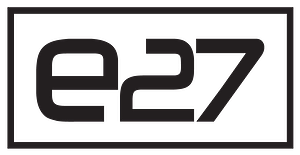The Rise of the “Human in the Loop” as a Low-Level Job
As AI systems mature, the “Human in the Loop” role is shifting from specialized oversight to commoditized, low-level tasks, often outsourced or crowdsourced for cost efficiency.
AI systems are advancing at a pace that is transforming the way enterprises operate. Large language models, computer vision systems, and predictive analytics tools are increasingly autonomous, capable of making decisions, generating content, and identifying patterns at scale. Yet, for all their sophistication, AI systems still need humans to validate outputs, handle edge cases, and ensure compliance.
This concept, known as “Human in the Loop” (HITL), once represented a critical safeguard for accuracy and accountability. It required skilled domain experts to review AI outputs, adjust parameters, and feed back corrections that improved model performance. But as AI capabilities have matured and workflows have industrialized, HITL work is quietly shifting from a specialized role to a commoditized, low-level job.
The Evolution of Human in the Loop in Enterprise AI
From Critical Oversight to Routine Task
In the early phases of AI adoption, particularly in industries like healthcare, financial services, and industrial automation, HITL was a role reserved for highly skilled professionals. Radiologists would validate AI-assisted diagnoses. Compliance officers would review flagged transactions for fraud. Engineers would label complex sensor data to train predictive models.
Over time, the quality of AI outputs improved dramatically, reducing the number of interventions needed. As a result, the work shifted from deep, contextual decision-making to repetitive review and annotation. In many cases, AI vendors began embedding simple “approve/reject” workflows directly into their products, enabling minimally trained workers to take on what once required expert knowledge.
Factors Driving HITL’s Downgrade
Several market forces have contributed to this transition:
-
Foundation models now handle a broader range of inputs with fewer errors.
-
Enterprises increasingly outsource data labeling and validation to low-cost labor markets.
-
HITL tasks are being designed for ease of use, with simple interfaces requiring little training.
-
AI vendors are integrating crowdsourced validation directly into their platforms, reducing the need for in-house expertise.
The Business Model Behind Low-Level HITL
Why Enterprises Still Need It
Even as AI models become more accurate, certain tasks still require human intervention:
-
Data labeling and verification for niche or regulated datasets.
-
Compliance review in sectors where laws require a human sign-off.
-
Guardrail monitoring in generative AI systems to detect hallucinations or bias.
These functions are essential, but their repetitive nature makes them ideal for low-cost execution models.
How Vendors Are Monetizing HITL
The commoditization of HITL has created a new category of service offerings. Crowdsourcing platforms like Amazon Mechanical Turk and Scale AI provide vast pools of on-demand workers for annotation, moderation, and verification tasks. Managed AI service providers offer offshore HITL operations as part of larger contracts. Some enterprise AI products now bundle “Validation as a Service” modules that let clients pay for human review on demand, without hiring dedicated staff.
The New HITL Workforce
Profile of the Job
Modern HITL roles often resemble gig economy work. Tasks include labeling images, transcribing audio, flagging anomalies, and verifying generated content. They require minimal training and are often performed through cloud-based tools. The focus is on throughput and accuracy in execution rather than deep subject-matter expertise.
Geographic Distribution
Many HITL operations are located in regions with lower labor costs, including Southeast Asia, South Asia, and Eastern Europe. Enterprises choose between offshoring for cost savings and nearshoring for faster turnaround and tighter quality control. In either case, the geographic dispersion reflects the industry’s shift toward treating HITL as a cost-optimized operational function rather than a strategic capability.
Risks and Ethical Concerns
Worker Exploitation
Because HITL tasks can be completed by almost anyone with a computer, pay rates tend to be low. Workers often face inconsistent workloads, minimal job security, and limited opportunities for career advancement. In more sensitive areas, such as content moderation, the psychological impact of reviewing harmful material can be significant.
Quality Risks
While lowering skill requirements reduces costs, it can also impact the quality of AI oversight. Workers without sufficient training may miss subtle errors, introduce inconsistencies, or fail to recognize compliance risks. High turnover further complicates quality control, making process standardization difficult.
Regulatory Scrutiny
The cross-border nature of HITL work introduces data privacy and security concerns. Regulations like GDPR and sector-specific compliance frameworks require strict controls on how data is accessed and processed. Enterprises that use offshore or crowdsourced HITL workers must navigate complex legal obligations to avoid breaches and penalties.
The Strategic Shift for Enterprises
Moving Up the HITL Value Chain
Forward-thinking enterprises are reimagining HITL as more than a low-level review function. They are training HITL workers to handle exception cases, bias detection, and ethical decision-making. This approach transforms the role from a simple validation task to a more strategic, value-added position within the AI lifecycle.
The Role of Automation in HITL
Automation is increasingly augmenting HITL processes. Some organizations now use AI to supervise AI, escalating only the most complex or ambiguous cases to humans. Over time, this model could reduce the number of human interventions to a fraction of current volumes, reserving human expertise for high-stakes scenarios where errors carry significant cost or reputational risk.
Conclusion
Human in the Loop will remain part of enterprise AI for the foreseeable future, but its character is changing. Once a specialized, high-value role, it is now treated by many organizations as an operational function to be optimized for cost and efficiency. For business leaders, the challenge lies in balancing the economic benefits of low-level HITL with the need for quality, ethical responsibility, and regulatory compliance.
Enterprises that elevate the role—investing in skills, judgment, and domain expertise—will be better positioned to leverage HITL as a strategic asset rather than a commoditized necessity. Those that treat it purely as low-cost labor risk not only quality issues but also reputational and regulatory consequences.



